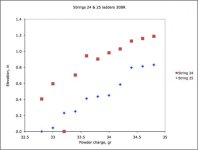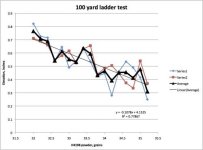Great thread guys,enjoyed the reading very much .
Tim in Tx
I agree Tim! Very little or no bickering, but lots of good info from some very smart people. It's hard to discuss tuners and not have infighting. This one defies that for the most part and is mostly in terms that the majority of us can understand. That's hard to do, also. These threads about tuners can quickly get into terminology that causes people that don't understand it, to lose interest and fall back on arguments that they've heard as being gospel.
I have an interest in knowing all I can about how they work, but realistically, it's so easy to make them work, understanding the why's and how's is not nearly as important as some make it to be.
The biggest hurdle, IMHO, to using tuners in cf is weight limits in LV class. For that reason, and to make them more viable for the most popular class in cf(LV), to get more people to use and experiment with tuners, we either need lighter tuners or more tuner friendly barrel profiles...or both.
I do truly feel that if more shooters in that class started using them, it'd snowball fairly rapidly.
The biggest difference I see in cf vs. rf is that some feel like the stopped muzzle theory is workable. I don't, but that's what these discussions are good for. As I understand that theory, the bullet exit is timed with the vibrational node where that node is moved to the muzzle and the muzzle is "stopped". It's my understanding that this is physically impossible, as moving that node to the end of a cantilevered beam isn't possible.
Perhaps Keith or someone can elaborate on this.--Mike



